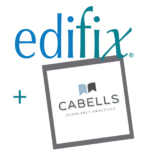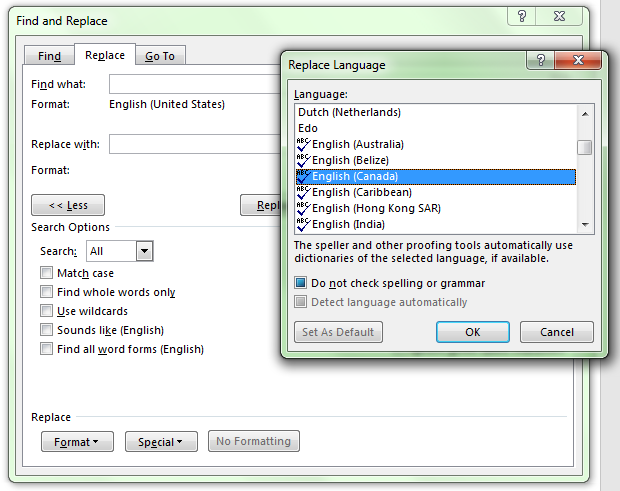What’s new at Inera and around the industry
September 2021 Newsletter
Register now for XUG 2021!
 Registration is now open for the 2021 eXtyles User Group meeting!
Registration is now open for the 2021 eXtyles User Group meeting!
The 17th annual XUG is happening online, in the afternoon of October 25 and the morning of October 26 (Eastern time).
The full meeting agenda has been posted, and we have an exciting lineup of Inera sessions, guest presentations, and networking opportunities. Check it out, and don’t forget to register!
We can’t wait to see you there!
New on the Blog: “eXtyles + Accessibility” series
 If you enjoyed last year’s XUG session on using eXtyles to build accessibility into your documents, you’ll want to check out our new blog series, which updates and expands on the information in that session.
If you enjoyed last year’s XUG session on using eXtyles to build accessibility into your documents, you’ll want to check out our new blog series, which updates and expands on the information in that session.
The first post in the series, eXtyles for Accessibility, Part 1, focuses on how eXtyles helps you remove barriers to accessibility caused by wacky font and character choices, poor or missing semantic structure, and misidentification of language.
Edifix + Cabells
The open beta period for Cabells Reference Checking in Edifix is still ongoing! The August update to our list of predatory journals added 321 new titles over the May update, for a new total of 14,845.
 Here’s what Edifix + Cabells has been up to since we launched the feature in May:
Here’s what Edifix + Cabells has been up to since we launched the feature in May:
- A total of 406 live Edifix jobs had at least 1 reference flagged as published in a journal that appears in Cabells Predatory Reports
- Of those 406 jobs, just 85 had more than 1 reference flagged
- These 406 jobs contained a total of 16,816 references, of which Edifix was able to fully process 15,183 (or 90%)
- Overall, 5% of all live jobs included at least 1 reference flagged by Cabells
Try it out for yourself on Edifix.com! Edifix subscribers and trial users get full access to Predatory Reports details for free during the open beta.
How to build a DOI
This handy guide from Crossref explains the three parts of a DOI, why Crossref recommends using opaque DOI suffixes, the basic rules of DOI construction, and more.
Did you know that eXtyles can not only auto-populate your DOI prefix in the Document Information Dialog but also construct a DOI for each document during XML Export, using the article ID (and potentially other components) either pulled from your submissions metadata or entered by the user? To create an “opaque” DOI suffix, avoid using elements such as volume, issue, and publication date; your best bet is likely the manuscript number assigned by your submission system.
What we’re reading: Citation reports, hijacked journals, and preprint policies
In an article in Research Evaluation titled “Journal citation reports and the definition of a predatory journal: The case of the Multidisciplinary Digital Publishing Institute (MDPI),” M. Ángeles Oviedo-García analyzes a set of 53 MDPI journals listed in the 2018 JCR annual report, concluding that “selective databases should conduct periodic controls and strengthen the criteria for the incorporation of journals, so as to prevent their good names from serving … to prolong malpractice among journals” that engage in predatory behaviors.
And speaking of predatory publishing, what do we mean when we talk about a “hijacked” journal? This post from our partners at Cabells explains it all.
*
Citing preprints has become mainstream—or has it? While this article from ASAPbio on what to do if you’re asked to remove a citation to a preprint is aimed at researchers, it should also give journal editors and publishers lots to think about!
Find Inera at upcoming (online) conferences
 ► ISMTE 2021 Global Virtual Event
► ISMTE 2021 Global Virtual Event
October 11-14
On October 14 at 2:30 p.m., Bruce Rosenblum will be speaking on a panel titled “Preprints, especially in the pandemic, and how to integrate them into your workflow.”
► XUG 2021
October 25 & 26
 ► CSE Fall 2021 Virtual Symposium
► CSE Fall 2021 Virtual Symposium
November 1 & 2
In conjunction with the Symposium, Liz Blake will be teaching in the Short Course for Manuscript Editors on November 5.
Attending one of these events? We’d love to see you—please contact us if you’d like to schedule a meeting.
Word tips: More formatting fun with Find & Replace
ℹ️ Our Word Tips are tested on recent versions of Word for Windows. If you are using Word for Mac, which has a smaller feature set, your mileage may vary.
We talked last time about using Find & Replace with face formatting, but that’s not all you can do!
In addition to adding face formatting to the Find what: and Replace with: boxes, you can also specify
- Language—for instance, you might want to replace all instances of English (Canada) with English (United States). This is helpful in cases where simply selecting all text and applying a new language setting won’t work because there’s more than one language in play.

- Font—for example, you might need to replace all instances of one font with another, in a document that uses multiple fonts, or perhaps you need to make sure that all instances of the word “eXtyles” appear in a specific shade of blue. Find & Replace gives you access to all the parameters of the Font dialog, including font color and size, various underline options, and small caps or all caps.
- Style—for example, perhaps you want to change all H1s to H2s, or maybe you just want to find all the H1s in your document.
You can also use Find & Replace to add highlighting to specific words, by typing the word into the Find what: box, leaving the Replace with: box blank, and choosing Highlight (hotkey: h) from the Format dropdown (hotkey: o). (To remove highlighting from text, choose Highlight twice; you’ll see “not highlight” below the Replace with: box.)
→ Bonus Tip: Find & Replace can’t tell one highlighter color from another; when finding highlights to remove, it will find all of them, and when adding highlights, it will add the color you last used.
But that’s not all! You can combine several of these factors to create a search that finds, for example, all instances of the words “chocolate cake” and replaces them with the words “gâteau au chocolat” in 12-point purple Times New Roman, highlighted in green, with the language setting changed to French (Canada). (We’re not saying you should do that, but you could!)
Have an intractable Word problem you’d love to solve? Have a clever tip to share? Send it to us at [email protected] (subject line: Word Tips)!